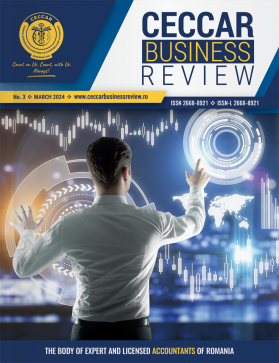
Analysis of the Static and Dynamic Financial Balance at the Level of Economic Operators
Number 8, August 2023 » Financial and performance management
Abstract: The financial balance of an economic operator defines the degree of harmonisation between the liquidity of assets and the exigibility of shareholders’ equity and debts, that make up its wealth. Generally, it is deemed that an economic operator is in financial balance when its activity generates available cash. Alongside liquidity and exigibility, the duration of using the assets, and of assigning shareholders’ equity and debts, respectively, also contribute significantly to getting it. Thus, it is natural that the harmonisation between assets and shareholders’ equity and debts should also be made according to the duration, differentiated on the long term (more than one year) and on the short term (less than one year). It is very usual that the financial balance should be estimated based on indicators at static level and based on flows at dynamic level.
Classification JEL: G17, G32 | Pages: 6-15
Statistics:
abstract views 131 |
PDF downloads 143 |
PDF views 66



